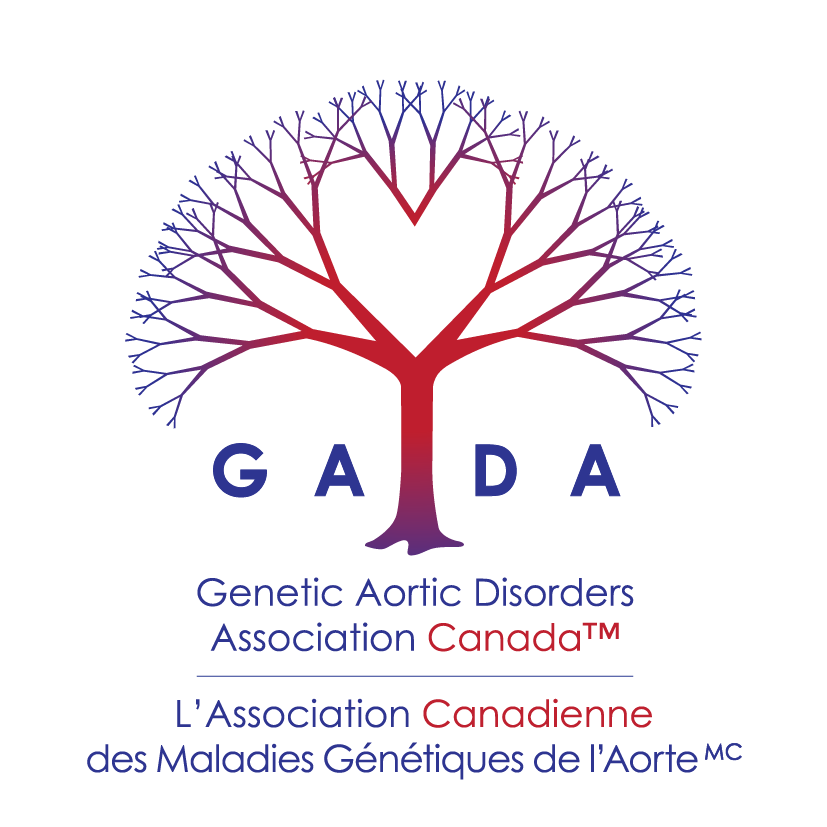Revised Diagnostic Criteria for Marfan Syndrome
Journal of Medical Genetics, July 5th 2010
In a new publication of the Journal of Medical Genetics, “The revised Ghent nosology for the Marfan syndrome” important revisions to the diagnostic criteria for Marfan Syndrome are outlined. An international panel of experts in the diagnosis and management of Marfan Syndrome, was convened in Brussels, Belgium and charged with considering modifications to the Ghent criteria (also referred to as Ghent nosology) originally put forth in 1996. The proposal for revised criteria was based on the critical review of clinical characteristics in large published patient cohorts. This revised nosology has been put forth with the expertise of panel members with extensive experience in applying the current criteria, the differential diagnosis of Marfan Syndrome, and are aware of the strengths and limitations of molecular genetic testing.
Marfan Syndrome affects more than 1 in 5000 Canadians, weakening connective tissue throughout the body and manifesting in entire body systems, including the heart, lungs, eyes, and skeletal system. With accurate diagnosis and management of this genetic disorder, individuals can live a normal lifespan.
The revised Ghent nosology, differing from the previous criteria which relied on “major” and “minor” features, allows for patient evaluation by deriving a systematic score with different features of Marfan Syndrome assigned a numeric value. The following major changes in the diagnostic guidelines have been set forth:
• More weight is given to the two cardinal features of Marfan Syndrome, aortic root enlargement/dissection and ectopia lentis.
• A more prominent role is assigned to molecular genetic testing of FBN1 and other genes relevant to connective tissue disorders. As Sphrintzen Goldberg (SGS), Loeys-Dietz (LDS), and vascular Ehlers-Danlos (vED) Syndromes have an overlap of characteristics with Marfan Syndrome, the new criteria formalises that additional diagnostic considerations and testing are required if an individual has sufficient findings to satisfy the criteria for Marfan Syndrome but also shows unexpected findings suggestive of an alternative diagnosis. Differential diagnosis and management of related disorders, also including Mitral Valve Prolapse Syndrome (MVPS) and Myopia, Mitral Valve Prolapse borderline (MASS) are outlined.
• Some less specific manifestations of Marfan Syndrome have been removed or made less influential.
• The revised nosology defines criteria for both sporadic patients (no family history) and index patients (those with a definitive family history) and also for individuals <20 years of age with a family history.
The revised Ghent nosology will increase accuracy in diagnosis and benefit physicians and patients. “The diagnostic evaluation for Marfan syndrome is unavoidably complex due to the highly variable presentation of affected individuals, the age-dependent nature of many of its manifestations, absence of gold standards and its extensive differential diagnosis. While diagnostic criteria should emphasize simplicity of use and the desire for early diagnosis, accuracy receives highest priority,” (Loeys et al., 2010).
Loeys, B.L., Dietz, H.C., Braverman, A.C., et al. The revised Ghent nosology for the Marfan syndrome. Journal of Medical Genetics. 47, 77: 476-485. 2010.
The revised Ghent nosology for the Marfan syndrome
Bart L Loeys, Harry C Dietz, Alan C Braverman, Bert L Callewaert, Julie De Backer, Richard B Devereux, Yvonne Hilhorst-Hofstee, Guillaume Jondeau, Laurence Faivre, Dianna M Milewicz, Reed E Pyeritz, Paul D Sponseller, Paul Wordswroth, Anne M De Paepe
Abstract
The diagnosis of Marfan syndrome (MFS) relies on defined clinical criteria (Ghent nosology), outlined by international expert opinion to facilitate accurate recognition of this genetic aneurysm syndrome and to improve patient management and counselling. These Ghent criteria, comprising a set of major and minor manifestations in different body systems, have proven to work well since with improving molecular techniques, confirmation of the diagnosis is possible in over 95% of patients. However, concerns with the current nosology are that some of the diagnostic criteria have not been sufficiently validated, are not applicable in children or necessitate expensive and specialized investigations. The recognition of variable clinical expression and the recently extended differential diagnosis further confound accurate diagnostic decision making. Moreover, the diagnosis of MFS whether or not established correctly can be stigmatising, hamper career aspirations, restrict life insurance opportunities, and cause psychosocial burden. An international expert panel has established a revised Ghent nosology, which puts more weight on the cardiovascular manifestations and in which aortic root aneurysm and ectopia lentis are the cardinal clinical features. In the absence of any family history, the presence of these two manifestations is sufficient for the unequivocal diagnosis of MFS. In absence of either of these two, the presence of a bonafide FBN1 mutation or a combination of systemic manifestations is required. For the latter a new scoring system has been designed. In this revised nosology, FBN1 testing, although not mandatory, has greater weight in the diagnostic assessment. Special considerations are given to the diagnosis of MFS in children and alternative diagnoses in adults. We anticipate that these new guidelines may delay a definitive diagnosis of MFS but will decrease the risk of premature or misdiagnosis and facilitate worldwide discussion of risk and follow-up/management guidelines.
